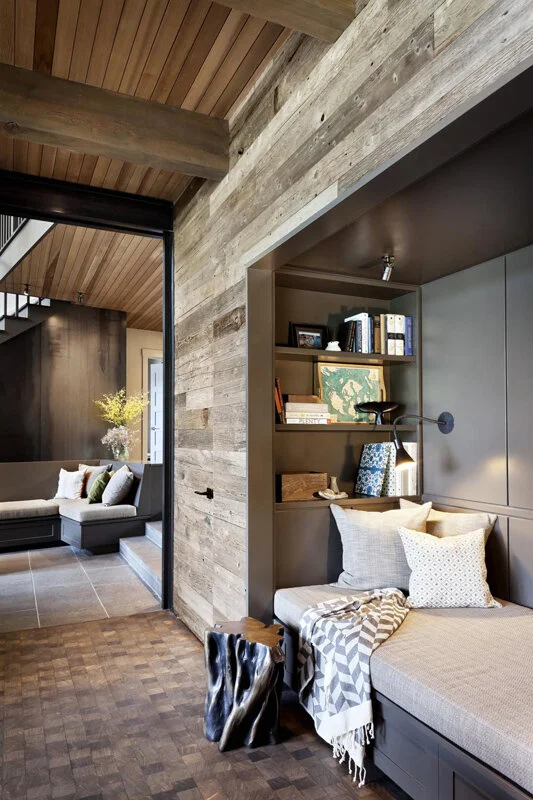Helpful Hints for Smart, Sustainable Home Design
Not sure where to start incorporating sustainable home design into your project? Whether you are remodeling or building from the ground up, it’s best to start planning early.
We are often asked by clients: if you had X-amount of additional funds to invest in a more sustainable project, how would you use them? What are the most accessible ways to add sustainable features to our home/project?
The good news is that Washington and California have already made significant efforts to improve their building and energy codes. Every code cycle increases those minimum standards for efficiency which helps create buildings that require less energy to produce and maintain. For clients who would like to push sustainability and energy efficiency further, we can work with you to determine your priorities.
Reduce heat & energy loads
For new construction, consider your site and orientation. This can have a significant impact on the heating & cooling load. For instance, orienting the building toward the south with large overhangs provides shade in the summer while allowing the low winter sun to warm the interior.
Consider a smaller footprint
Are there areas that you will only use 1-2 weeks out of the year or that can be combined? We have all shifted how we are using our homes in 2020, so maybe you’ve realized having a dedicated guest space doesn’t make sense or you always eat at your kitchen island instead of in the dining room.
Increase insulation values
Again, the code minimums in WA & CA are already higher than other areas of the county, but increasing the insulation of your home’s envelope (roof, walls & floor) will increase the resistance to cold & heat gain as outside temperatures fluctuate. This is often a minimal upgrade in the cost of construction and can in turn result in less energy required to heat and cool your building.
Minimize use of resources
Sometimes the most sustainable building is the one that’s already built. Saving an existing building (or part of one) and upgrading the thermal envelope is a sustainable way to minimize your impact. Less waste goes to the landfill. Salvaging materials saves on energy that would go into producing new ones.
Divert waste from the landfill
If you are knocking down one house to build, consider ‘deconstruction’ as opposed to ‘demolition’. The process of deconstruction takes longer, but many materials can be reused or recycled and will reduce what goes to the landfill. There are also lots of local resources for building salvage.
Invest in durable, long-lasting materials
A metal roof can last upwards of 30-40-50 years if properly maintained and eventually has the potential to be recycled. Upfront costs may be higher, but consider the lifespan of the key materials and their cost for replacement.
Limit or eliminate fossil fuel energy to your home
Today there are lots of alternatives for gas appliances – induction ranges, electric heat pumps (for heating & cooling!), heat pump water heater, ground source heat pumps, etc.
Incorporate renewable energy sources such as solar or wind
Even if you don’t install photovoltaic panels right away, you can plan for a solar-ready roof and install later.
Minimize water consumption
Install low-flow faucets & showerheads, dual flush toilets and appliances with low-water use. Add cisterns to harvest rainwater from the roof for irrigation and greywater (depending on the rules in your area).
Light & Air quality
Air quality is often something that gets overlooked. The materials you put into your home can reduce air quality through off-gassing or by trapping dirt and pollutants. Keep areas with carpet away from high-traffic areas or entrances. Install low or no-VOC materials wherever possible.
Natural light is key for maintaining the health of building occupants
Allow for natural light from multiple directions in common spaces and operable windows where it makes sense for cross-ventilation. Skylights are often overlooked, but can provide consistent daylight and ventilation in a space if placed correctly.
Provide multiple sources of light in a room (for use depending on the time of day)
Energy codes require that 75% of fixtures be high-efficacy, so use LED sources when possible. They use less energy and are available in a variety of color temperatures so you can mimic the glow of an incandescent light or daylight.
Invest in ‘design that delights’
As focused as we are on building performance, durability, and resource use, it is also important to acknowledge that buildings we love last longer and mean more.
This isn’t a comprehensive list, but things that we have incorporated into our projects over the years. Let us know if you have questions about incorporating sustainable design into your next project.










